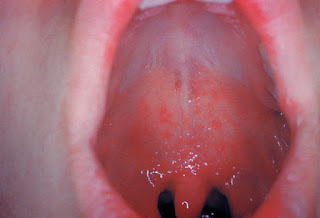Aspirin: Primary Prevention of Cardiovascular Disease and Cancer
Cardiovascular disease (CVD) and cancer are the leading
causes of morbidity and mortality worldwide, representing 24 and 13 percent of
all deaths, respectively.
Aspirin produces significant reductions in CVD morbidity and mortality among survivors of a wide range of occlusive CVD events, including subsequent coronary heart disease, especially myocardial infarction (MI) and stroke.
Aspirin produces significant reductions in CVD morbidity and mortality among survivors of a wide range of occlusive CVD events, including subsequent coronary heart disease, especially myocardial infarction (MI) and stroke.
In secondary prevention, the absolute benefits of occlusive events are
far greater than the absolute risks of major bleeding. In primary prevention,
however, among apparently healthy people, the benefit-to-harm ratio is less
clear.
Although the benefits of Aspirin on CVD have been known for decades,
more recent evidence from randomized trials has suggested a benefit on
colorectal cancer. These findings may impact the threshold for the prescription
of aspirin by health care professionals and the wishes of healthy people
considering aspirin use.
While numerous tools are available to estimate benefits and risks of disease, they all have limitations. None of these tools provides a risk-to-benefit calculation that takes into account all the risk factors for CVD events or the combined risk of cardiovascular events, colon cancer, and major bleeding with daily use. In addition, many calculators may not include major risk factors such as family history of early CVD or cancer as well as obesity or physical inactivity.
Level of risk: The anticipated absolute effects of taking low-dose aspirin for 10 years compared with no aspirin in the primary prevention of CVD and cancer are shown for populations at different levels of risk for CVD and different risk levels for cancer. Patients without prior CVD or cancer will fall into one of three broad groups:
Possible Benefit's
- All-cause mortality or cardiovascular mortality: No impact, or a very small reduction (high-quality evidence)
- Nonfatal myocardial infarction: Likely a reduction in nonfatal MI over 10 years (moderate-quality evidence)
- Nonfatal stroke: Likely no reduction or a very small reduction in nonfatal stroke over 10 years (moderate-quality evidence)
- Colon cancer incidence: Possible reduction in colon cancer incidence over long-term follow-up of 20 years (low-quality evidence)
Potential Risks
- Bleeding: The primary adverse effect of aspirin is major bleeding, typically defined as bleeding from the gastrointestinal tract or other sites that requires hospitalization and/or transfusion, as well as the extremely rare but catastrophic intracranial bleeding. Aspirin confers a significant 50 percent increase in major nonfatal extracranial bleeding over 10 years. Bleeding most commonly occurs in the gastrointestinal tract and is rarely fatal. Bleeding also occurs at other sites, with intracranial bleeding (hemorrhage) being the rarest (approximately 4 per 10,000) but the most serious (with a 50 percent case fatality ratio). In most patients who have an episode of major bleeding while taking aspirin for primary prevention, a decision must be made about whether the risk of recurrent bleeding outweighs the benefits of long-term use. The US Preventive Services Task Force (USPSTF) report on the use of aspirin for the primary prevention of cardiovascular disease (CVD) and cancer suggested that increasing age, male sex, and diabetes increased the risk for major bleeding.
- Aspirin sensitivity: A very small minority of patients are unable to tolerate aspirin because of hypersensitivity, which is most often manifested clinically as respiratory symptoms, including rhinitis and/or asthma, and less frequently as urticaria/angioedema (7 to 20 per 10,000 treated). With some forms of aspirin sensitivity, cross-reactions occur with other NSAIDs. In such circumstances, clopidogrel may be a suitable alternative. Desensitization to aspirin may be another option.
Dosing
The potential benefits on cardiovascular disease (CVD) events from long-term aspirin therapy are achieved with doses in the range of 75 to 100 mg daily, but the data for cancer benefit are not entirely consistent.- Prevention of cardiovascular disease events: Aspirin appears to be equally effective for the prevention of vascular events at doses between 75 and 325 mg daily. Aspirin in doses from 75 to 325 mg daily produce similar benefits on CVD events to doses in excess of 1300 mg but with far fewer side effects.
- Prevention of cancer events: Most observational cohort studies suggest a preventive effect on development of adenomas and/or colorectal cancer that increases with increasing number of aspirin doses per week. These observational data are consistent with some, but not all, randomized data that daily, as opposed to every second day, aspirin is required for prevention of colorectal and possibly other cancers.
Assessing Benefits and Risks
The decision regarding aspirin for primary prevention among healthy patients should be individualized based on patient preference after discussion of the potential benefits and risks. Practitioners and patients should have frank and open discussions and these discussions should include patient values and preferences regarding cardiovascular disease (CVD), colorectal cancer, and major bleeding.While numerous tools are available to estimate benefits and risks of disease, they all have limitations. None of these tools provides a risk-to-benefit calculation that takes into account all the risk factors for CVD events or the combined risk of cardiovascular events, colon cancer, and major bleeding with daily use. In addition, many calculators may not include major risk factors such as family history of early CVD or cancer as well as obesity or physical inactivity.
Level of risk: The anticipated absolute effects of taking low-dose aspirin for 10 years compared with no aspirin in the primary prevention of CVD and cancer are shown for populations at different levels of risk for CVD and different risk levels for cancer. Patients without prior CVD or cancer will fall into one of three broad groups:
- Low-risk individuals: Our judgment is that for most low-risk patients, the absolute benefits are insufficient to warrant use of long-term daily aspirin. For example, consider aspirin use for 10 years in 1000 patients at age 40 with low Framingham risk score (estimated 10-year cardiovascular risk of <3 percent) and low risk of colorectal cancer (<3 percent); one could expect five fewer myocardial infarctions (MIs), four more major bleeds, and seven fewer colorectal cancers with aspirin use. This also means that over 980 individuals taking aspirin for 10 years will potentially see no benefit or risk.
- Intermediate-risk individuals: A different benefit-to-risk ratio emerges for patients at intermediate risk of CVD and malignancy: 1000 patients at age 60 years and a risk of CVD events of 10 to 20 percent over 10 years and at average risk of any malignancy (approximately 12 percent). Aspirin use over a 10-year period would be expected to result in 17 fewer MIs, 16 more major extracranial bleeding events, and 13 fewer cases of colorectal cancer over a 20-year follow-up. Individual patient values and preferences should play significantly into decision-making in this group.
- High-risk individuals: Some patients are at particularly high risk of CVD, such as those whose 10-year risks of a first coronary heart disease event are greater than 20 percent. These are typically individuals over the age of 40 years who have multiple CVD risk factors. In addition, individuals with familial hypercholesterolemia are at very high risk for premature CVD. This group includes individuals who are more likely to benefit from long-term daily aspirin, although the absolute benefit remains small and potential risks present.
Importance of age
Although numerous trials have reported subgroup analyses for the benefit and harm of low-dose aspirin, results have been inconsistent. However, the risk/benefit ratio of aspirin for primary prevention appears to be less favorable among older adults.- In the ASPREE trial, the only trial enrolling only patients age 70 and above, there was no clear effect of aspirin in primary prevention of MI, stroke, or cardiovascular mortality.
- The US Preventive Services Task Force (USPSTF) performed a microsimulation model to assess the magnitude of net benefit of low-dose aspirin use stratified by age and cardiovascular risk. Their data suggest that aspirin initiation provides a modest net benefit in life-years in those aged 40 to 59 years with 10 percent or higher 10-year cardiovascular risk. In older patients, the impact varied according to age, sex, and cardiovascular risk. However, aspirin resulted in a loss of life years in men and woman aged 70 to 79.
Recommendations
Recommendations regarding the daily use of low-dose aspirin vary from guideline to guideline. The following represent recommendations from societal guideline organizations:- The 2019 American College of Cardiology/American Heart Association (ACC/AHA) guidelines on the primary prevention of cardiovascular disease (CVD) recommend that low dose aspirin (75 to 100 mg orally daily) may be considered among adults 40 to 70 years of age who are at higher risk of CVD but not at increased risk of bleeding. However, they recommend that low-dose aspirin should not be given on a routine basis for primary prevention of CVD among adults over 70 years of age, or among adults of any age who are at increased risk of bleeding.
- The 2022 US Preventive Services Task Force (USPSTF) statement on the use of aspirin for the primary prevention of CVD and colorectal cancer makes recommendations for adults aged 40 years or older without known heart disease and without increased bleeding risk.
- The decision to initiate low-dose aspirin for individuals aged 40 to 59 years of age without known heart disease who have a 10 percent or greater 10-year risk of CVD risk should be individualized and the potential benefit is small. Risk was calculated using the ACC/AHA cardiovascular risk calculator.
- Among adults 60 years or older without known heart disease, initiating low-dose aspirin for the primary prevention of CVD is not recommended.
%20compared%20with%20no%20aspirin%20in%20the%20primary%20prevention%20of%20cardiovascular%20disease%20and%20cancer.jpeg)



Comments
Post a Comment